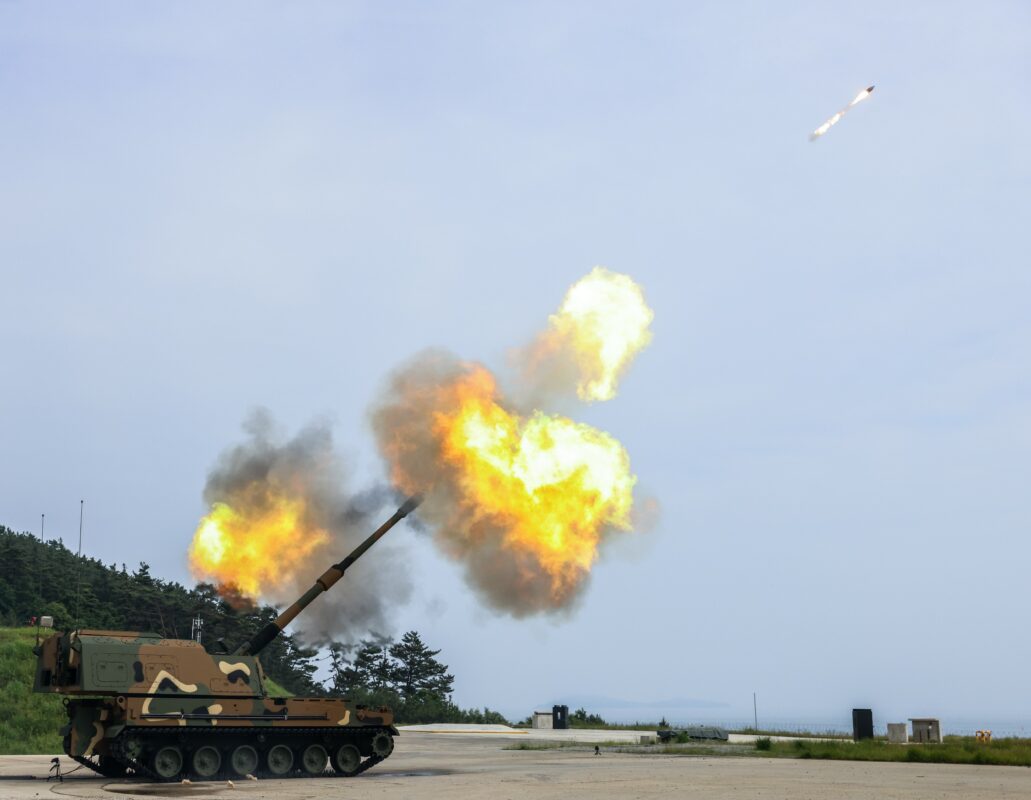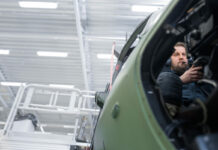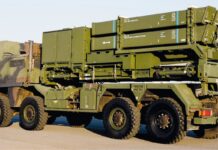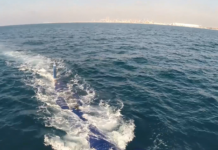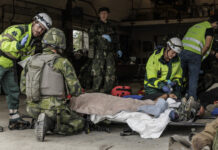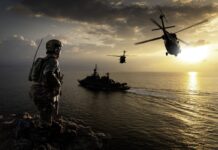At the end of the 1990s the Republic of Korea Army (ROKA) decided that it needed an advanced self-propelled artillery system, this requirement was driven by the fact that they faced a massive conventional and rocket artillery threat. To overcome this threat, ROKA needed a system that offered high levels of mobility and protection, that could move quickly into and out of firing position, and then rapidly conduct fire missions with high levels of accuracy on targets out to extended ranges. Equally important for ROKA was that they wanted a system with growth potential that could take advantage of advances in artillery and automotive technology, as they envisaged an extended service life for their future artillery system.
To answer this ROKA requirement, the Agency for Defense Development (ADD) joined with what is today Hanwha Defense, to develop the K9 artillery system. This was followed by the provision of support vehicles for the artillery system, these include the K10 ammunition resupply vehicle that carries 104 rounds and 504 charges for rapid transfer to the K9 gun, and the K77 fire direction centre acting as a battery command post for the K9.
The K9 itself mounts 155 mm 52 calibre Joint Ballistics Memorandum of Understanding (JBMOU) compliant ordnance and can therefore utilise all NATO standard artillery ammunition and charges (both bag and modular). Performance is a range of 40 km with a K307 or equivalent HE-BB nature, using the K315 HE-RAP nature a range of over 50 km can be achieved. Operationally the K9 takes 30 seconds to get into firing position, 30 seconds to acquire the target, lay the gun and load, a fire mission of six to eight rounds is actioned in 60 seconds, 30 seconds after that it is ready to redeploy and within 90 seconds it moves off.
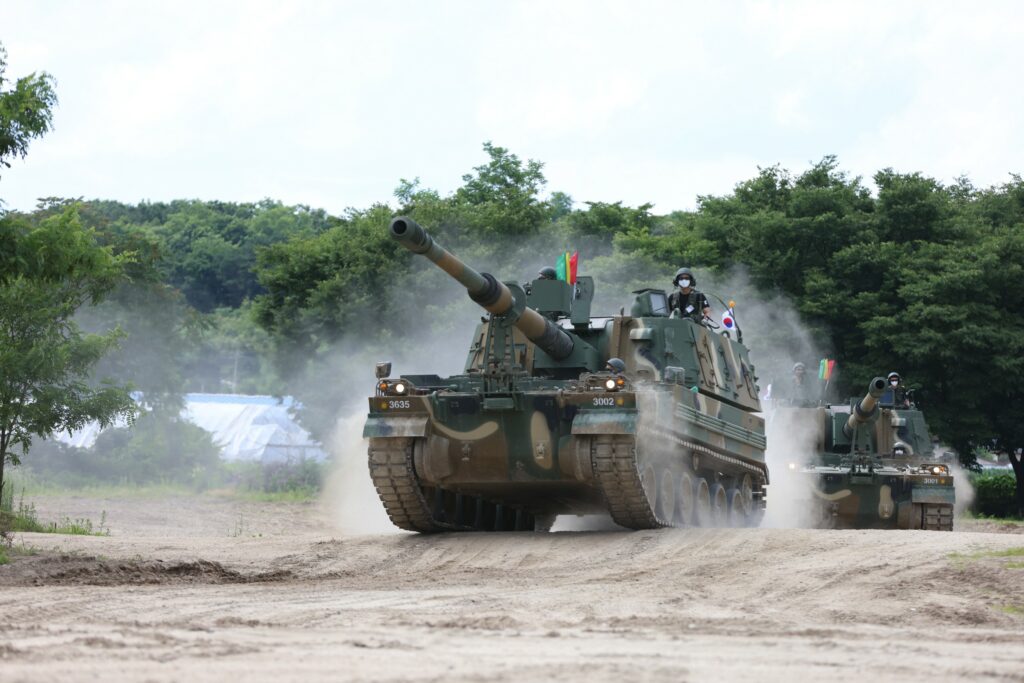
Right at the start of the K9 programme the technologies and systems being developed by ADD and Hanwha Defense were so advanced that they were attracting export customers. Turkey was looking to progress an indigenous 155 mm self-propelled artillery programme, to reduce their development risk and speed up their programme they turned to Korea and it can justifiably be said that the Turkish T-155 Firtina system is based on Korean technology. Poland was another country that turned to Korean technology to progress an indigenous self-propelled artillery system programme, ordering and later producing under license the K9 chassis for the AHS Krab artillery system.
Impressive as the K9 was, further development allowed ROKA to field an enhanced variant in the form of the K9A1 from 2018 onwards. Changes include automatic fire control system enhancements to improve ease of use and add real time ammunition status management, navigation and positioning system enhanced with INS and GPS, driver night vision system improved and a rearview camera installed and, finally, an auxiliary power unit is also fitted.
Even as the K9A1 came into service with ROKA, Hanwha Defense was already working on the next evolution of the K9 system, which would become the K9A2. This conclusively demonstrates the growth potential that is built into the K9 system, as existing K9 systems can be upgraded to the K9A2 standard and beyond. A major change is the installation of an ammunition autoloader that substantially increases rate of fire to over nine rounds per minute. This also allows a reduction of crew numbers from five down to three, plus crew comfort is improved by the installation of an air conditioning system. The fire suppression system is enhanced and a Remote Controlled Weapon Station (RCWS) is fitted for close-in defence.
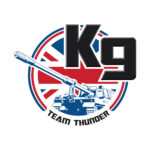
The K9A2 provides the basis of the Hanwha Defense and Team Thunder proposal to the UK for the Mobile Fires Programme (MFP). Team Thunder members are Lockheed Martin UK, Pearson Engineering, Leonardo UK, Horstman Group and Soucy Defense. Hanwha Defense has committed to transfer at least 50% of the manufacture of the British variant of the K9A2 to its Team Thunder partners to create or sustain over 800 jobs.
The current K9 user community of nine nations including NATO members (Norway, Poland, Estonia, Turkey and Finland) provides significant strategic and operational opportunities for international collaboration, interoperability benefits and through life operating and upgrade efficiencies. These could include, increased gun tube length, new ammunition natures, protection, fire control enhancements and performance and emission improvements to the engine and fuel system.
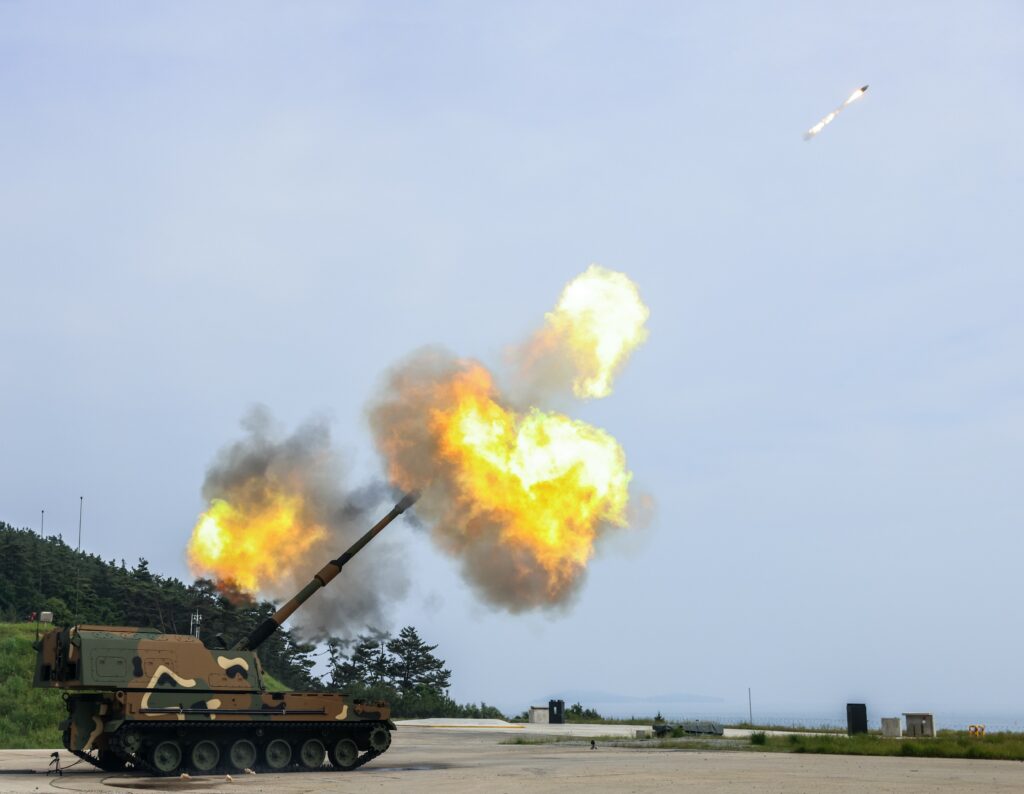
With Poland placing a massive order in July for 672 K9 systems under a framework contract, K9 continues to define modern self-propelled artillery!


